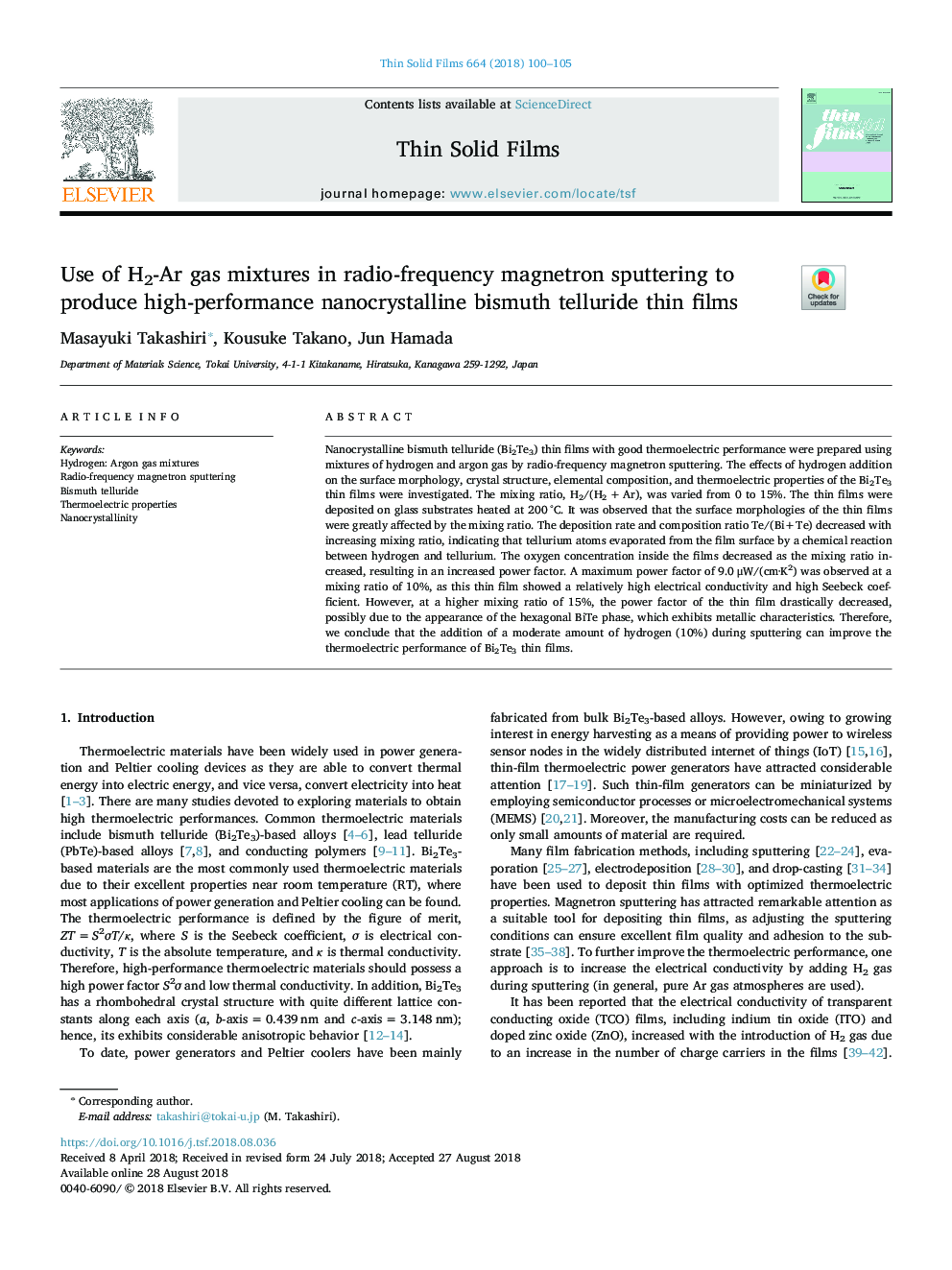| Article ID | Journal | Published Year | Pages | File Type |
|---|---|---|---|---|
| 10136045 | Thin Solid Films | 2018 | 6 Pages |
Abstract
Nanocrystalline bismuth telluride (Bi2Te3) thin films with good thermoelectric performance were prepared using mixtures of hydrogen and argon gas by radio-frequency magnetron sputtering. The effects of hydrogen addition on the surface morphology, crystal structure, elemental composition, and thermoelectric properties of the Bi2Te3 thin films were investigated. The mixing ratio, H2/(H2â¯+â¯Ar), was varied from 0 to 15%. The thin films were deposited on glass substrates heated at 200â¯Â°C. It was observed that the surface morphologies of the thin films were greatly affected by the mixing ratio. The deposition rate and composition ratio Te/(Bi+Te) decreased with increasing mixing ratio, indicating that tellurium atoms evaporated from the film surface by a chemical reaction between hydrogen and tellurium. The oxygen concentration inside the films decreased as the mixing ratio increased, resulting in an increased power factor. A maximum power factor of 9.0â¯Î¼W/(cm·K2) was observed at a mixing ratio of 10%, as this thin film showed a relatively high electrical conductivity and high Seebeck coefficient. However, at a higher mixing ratio of 15%, the power factor of the thin film drastically decreased, possibly due to the appearance of the hexagonal BiTe phase, which exhibits metallic characteristics. Therefore, we conclude that the addition of a moderate amount of hydrogen (10%) during sputtering can improve the thermoelectric performance of Bi2Te3 thin films.
Keywords
Related Topics
Physical Sciences and Engineering
Materials Science
Nanotechnology
Authors
Masayuki Takashiri, Kousuke Takano, Jun Hamada,
